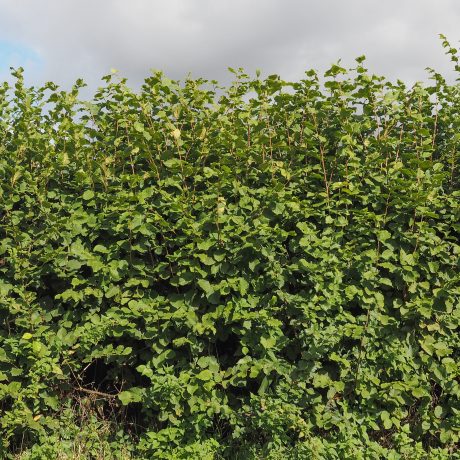Countryside Stewardship Payment Rate Changes – What do I need to know?
Robert Gazely
Jan, 13 2022DEFRA have reviewed Countryside Stewardship payment rates for revenue options. The new payment rates will apply from 1st January 2022 and are described by DEFRA as being “based on current costs.”
For existing agreements beginning on or before 1st January 2022, where the new rate has:
- Increased, the new (higher) rate will be paid.
- Decreased, the existing (higher) rate shown on the signed agreement will be paid.
- Not changed, the existing rate shown on the signed agreement will be paid.
- For agreements beginning on 1st January 2023, the new rates will apply.
Examples where payment rates have changed include option AB1 (nectar flower mix) increasing from £511/ha to £579/ha, AB16 (autumn sown bumblebird mix) increasing from £550/ha to £608/ha, and GS2 (permanent grassland with very low inputs) increasing from £95/ha to £132/ha.
However, not all options have increased. A few options have decreased, such as option GS1 (take field corners and small areas out of management) which drops from £365/ha to £333/ha, and GS15 and GS17 (haymaking and lenient grazing supplements) which drop from £85/ha to £37ha and £44/ha to £23/ha respectively. These decreases are however for new agreements that will begin from 1st January 2023 onwards, giving applicants time to plan ahead of this spring’s application window, and protecting those in existing agreements and who have applied for agreements to begin from 1st January 2022.
Where are the opportunities?
Option AB2 (overwinter stubble) has decreased to £54/ha whereas option SW6 (winter cover crops) has increased to £124/ha. This is likely to encourage farmers to establish cover crops rather than leaving bare stubble prior to spring drilling. Some farmers have chosen to back-to-back SW6 with option AB14 (harvested low input cereal) utilising a crop such as spring oats or spring barley. This has dropped from £266/ha to £236/ha, however even at the adjusted rates for both SW6 and AB14, this still effectively provides a supplement of £360/ha to the spring crop gross margin, while providing an opportunity to condition soil structure, reduce soil erosion and nutrient leaching, and build organic matter. Those with existing agreements will do even better, benefitting from the new (higher) rate for option SW6 and enjoying the security of the existing (higher) rate for AB14, together totalling £390/ha.
Specialist and particularly coastal options such as CT1 and CT2 (sand dunes and vegetated shingle), CT3 (saltmarsh) and CT4, CT5 and CT7 (inter-tidal and saline habitat) benefit from significant increases, the latter for example rising from £276/ha to £422/ha. This perhaps hints at one of the priorities – coastal habitats – that will emerge under Local Nature Recovery, which will eventually replace Countryside Stewardship.
The increase in payment rate for AB8 (flower rich margins and plots) to £628/ha increases its attractiveness in comparison to AB9 (winter bird food) as the latter requires annual or biennial re-establishment.
Increases in payment rates for options GS3 (ryegrass seed-set as winter food for birds) and GS4 (legume and herb-rich swards) to £426/ha and £358/ha respectively, make these more attractive break crop options within the arable rotation.
What difference will the changes make to my annual payments?
- Here is an example of an application that was made in spring 2021 for an agreement to begin on 1st January 2022 on a 280 hectare mixed farm, between the payment rates at the time of application and the new payment rates that will now apply as a result of DEFRA’s review:
| Option | Amount (ha) | Existing Rate (£/ha) | New Rate (£/ha) | Existing Value (£) | New Value (£) | |
| AB9 | Winter bird food | 7.4 | 640 | 640 | 4,736 | 4,736 |
| AB14 | Harvested low input cereal | 50 | 266 | 266 | 13,300 | 13,300 |
| AB15 | Two year sown legume fallow | 13 | 522 | 569 | 6,786 | 7,397 |
| GS2 | Permanent grassland with very low inputs | 29 | 95 | 132 | 2,755 | 3,828 |
| SW1 | 4-6m buffer strip on cultivated land | 7.8 | 353 | 419 | 2,753 | 3,268 |
| SW3 | In-field grass strips | 11.8 | 557 | 624 | 6,573 | 7,363 |
| SW6 | Winter cover crops | 50 | 114 | 124 | 5,700 | 6,200 |
| WT2 | Buffering in-field ponds and ditches in arable land | 0.4 | 501 | 563 | 200 | 225 |
| TOTAL | Annual | 42,803 | 46,317 | |||
| TOTAL | 5 Years | 214,015 | 231,585 | |||
| % Change | +8.2% |
These changes come at a time when, although commodity prices are high, input costs – particularly fertiliser and seed – are set to rise significantly. Although an option such as AB15 (two year sown legume fallow) has only risen from £522/ha to £569/ha (an increase of 9%) and consequently may not match the increase in arable input costs which could rise by perhaps 10-15% in the coming season, it of course offers a de-risked return in comparison to high risk break crops such as oilseed rape and peas, or low value break crops such as beans.
The review of payment rates only applies to revenue options and DEFRA add that there are no plans to change payment rates for capital options for 2022.






